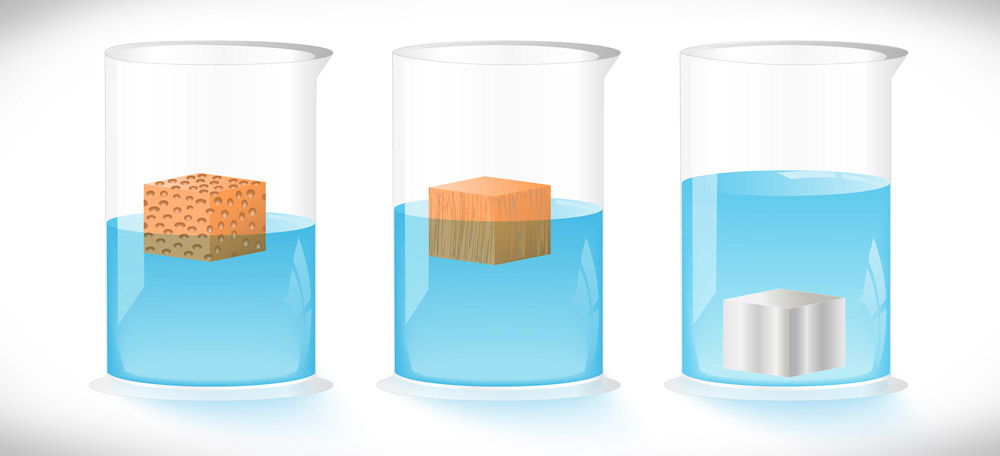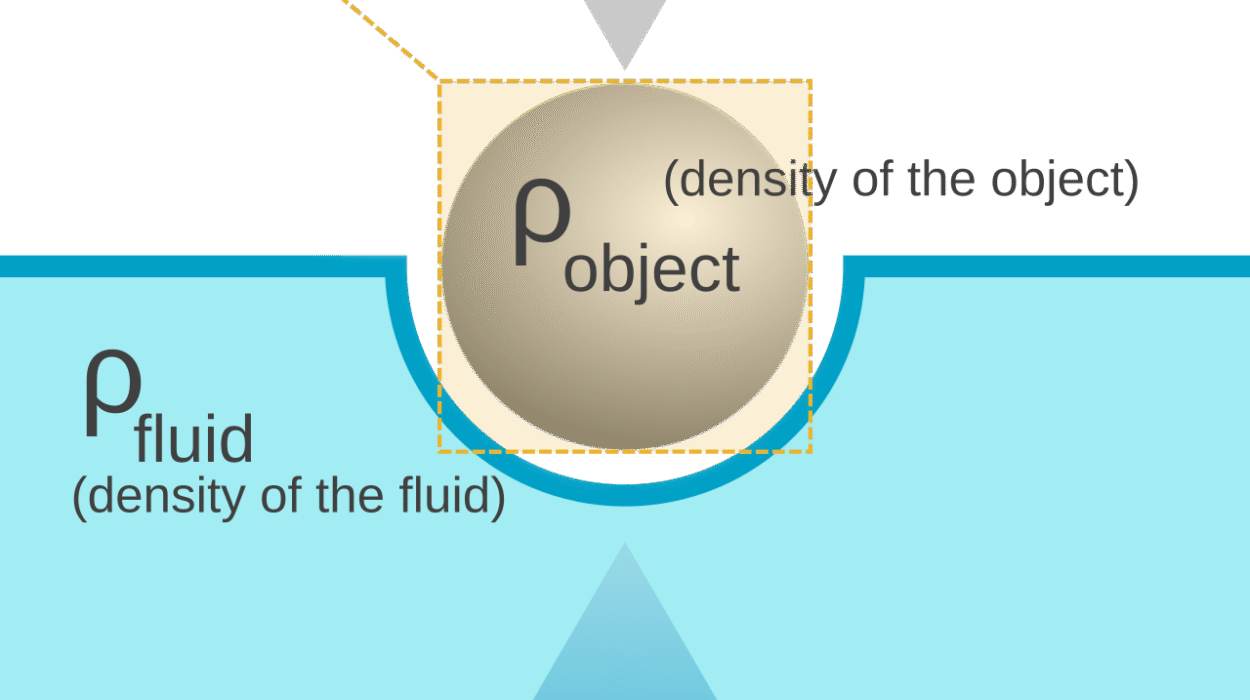Have you ever dropped a stone in water and watched it plunge straight to the bottom while a rubber duck bobs cheerfully on the surface? Or wondered why massive steel ships float while a small coin sinks? These everyday observations point to one of physics’ most deceptively simple but profoundly powerful concepts: density. It’s the invisible hand that determines whether something sinks or floats, a subtle interplay of mass and volume that governs not only our bathtubs and swimming pools but also the inner workings of planets, stars, and the structure of the universe itself.
In this exploration, we’ll dive deep—literally and figuratively—into the nature of density. We’ll explore how it works, why it matters, and how it explains the motion and behavior of everything from ships on the sea to planets in space. But don’t worry—no physics degree required. Just bring your curiosity and a willingness to see the world a little differently.
What Exactly Is Density?
To understand density, we start with a very simple question: how much stuff is packed into a given amount of space? In scientific terms, density is defined as mass per unit volume. That is, how much matter is squeezed into a certain amount of space.
Mathematically, this is expressed as:
Density = Mass ÷ Volume
Let’s break this down. Mass refers to the amount of matter in an object. It doesn’t change depending on where you are. Whether you’re on Earth, the Moon, or floating in deep space, a 10-kilogram brick is still a 10-kilogram brick. Volume, on the other hand, is the amount of space an object takes up, usually measured in cubic centimeters (cm³), liters, or cubic meters (m³).
So when you divide mass by volume, you get a number that tells you how densely packed the material is. Think of a sponge versus a rock. A sponge might be large, but it’s full of air, so it has a low density. A rock of the same size is compact and heavy, so it has a high density.
The Density Spectrum: From Feathers to Lead
To visualize density, imagine two identically sized cubes—one made of feathers and one made of lead. They have the same volume, but vastly different masses. The feather cube is light and airy, while the lead cube is impossibly heavy. That means the feather cube has low density, and the lead cube has high density.
This spectrum of density explains why certain materials feel heavier than others even when they are the same size. It’s why metals are favored for building structures—they pack more material into less space, making them strong and durable. And it’s why gases like helium and hydrogen rise while others like carbon dioxide sink—they’re less dense than the air around them.
But this concept also helps us unlock a more dramatic phenomenon: whether something floats or sinks.
The Force That Pushes Up: Buoyancy
Before we can understand why density affects floating, we need to introduce an equally important idea: buoyancy. This force was first understood by a Greek mathematician and scientist named Archimedes, who made his discovery while taking a bath over 2,000 years ago.
According to the Archimedes Principle, any object submerged in a fluid (like water) is pushed upward by a force equal to the weight of the fluid it displaces. In other words, when you put an object in water, it pushes some water out of the way. The water pushes back with an upward force, and if that force is greater than the weight of the object, it floats.
This is where density comes into play. If an object is less dense than the liquid it’s in, it displaces enough fluid to support its weight and floats. If it’s more dense, it sinks because the water can’t push back hard enough.
Let’s see this in action.
Why Ships Float and Coins Sink
A steel ship weighs thousands of tons, yet it floats effortlessly. Meanwhile, a small coin, which weighs just a few grams, drops like a stone. How is that possible?
The secret lies in shape and density. While steel is a very dense material, a ship isn’t solid steel. It’s hollow and filled with air, which lowers its overall average density. Think of it as a giant metal bubble. The ship’s shape is designed to displace a large volume of water, increasing the buoyant force acting upon it. As long as the total density of the ship (including the empty space inside it) is less than the density of water, it floats.
On the other hand, a coin is small and solid. Its mass is concentrated in a very small volume, making it denser than water. When you drop it in, it doesn’t displace enough water to support its weight, and down it goes.
Density and Floating in Other Liquids
It’s not just water that has a density—all fluids do. And different liquids have different densities, which affects how objects behave when placed in them.
For example, the Dead Sea has such a high salt content that it is denser than regular seawater. This means that people can float in it with almost no effort. The salty water is pushing up harder than fresh water would. That’s because the salt adds mass to the water without significantly increasing its volume, raising its density.
Conversely, in a less dense liquid like alcohol, some things that float in water will sink. A grape, which might bob at the surface of water, will drop to the bottom in rubbing alcohol.
This is why understanding the density of both the object and the liquid is critical to predicting floating behavior.
The Role of Temperature in Density
Here’s where things get even more interesting. Temperature changes the density of substances. As a rule, when materials heat up, they expand. This means their volume increases while their mass stays the same, lowering their density.
Think about how a hot air balloon rises. The air inside the balloon is heated, causing it to expand. This makes it less dense than the cooler air outside, and as a result, the balloon rises.
In liquids, the same principle applies. Warm water is less dense than cold water, which is why warm currents float on top of cold ones in the ocean. In fact, this density-driven movement of water helps regulate the Earth’s climate by moving heat around the globe in massive ocean currents.
Floating in the Atmosphere: Gases and Buoyancy
Density and buoyancy don’t just apply to solids and liquids. Gases obey these same rules. That’s how hot air balloons and weather systems work.
Helium balloons float because helium is lighter (less dense) than air. When you fill a balloon with helium, it displaces a certain volume of air. Since helium is less dense, the weight of the air displaced is greater than the weight of the balloon, and up it goes.
Similarly, clouds form and rise due to changes in air density caused by temperature. Warmer, less dense air rises above cooler, denser air, creating vertical movements in the atmosphere that we experience as wind, weather, and storms.
The Density of the Earth and Beyond
Now let’s take this cosmic. Density isn’t just a useful concept in your kitchen or at the swimming pool. It also explains the structure of our planet—and even the entire universe.
Earth is not uniformly dense. The inner core is made of heavy elements like iron and nickel, while the crust is composed of lighter rocks and minerals. During the formation of the planet, gravity pulled the densest materials toward the center in a process known as planetary differentiation. This explains why Earth’s core is metallic and its surface is rocky.
In space, massive stars collapse under their own gravity until the pressure forces atoms together into denser and denser states. This is how we get white dwarfs, neutron stars, and even black holes, where density reaches almost unimaginable levels.
Practical Uses of Density in Science and Industry
Density is more than a curiosity—it has countless practical applications. In chemistry, it’s used to identify substances. Every pure substance has a characteristic density, and by measuring it, scientists can determine what a material is.
In engineering, understanding density helps in designing structures that float, fly, or resist pressure. Submarines control their buoyancy by adjusting the amount of water in ballast tanks, effectively changing their density. Oil companies use density differences to separate petroleum from water. In environmental science, pollution tracking and water quality testing rely on density-driven fluid behavior.
Even in the kitchen, density plays a role. When you pour honey into tea, it sinks to the bottom because it’s denser than water. Cream floats on top of coffee because it’s less dense. A good bartender even uses density to make layered cocktails, with each liquid sitting neatly on top of the other based on its density.
Density Tricks and Mind-Benders
Here’s a fun one: ice floats in water but sinks in alcohol. That’s because ice is less dense than water but more dense than alcohol. In fact, water is unique in that its solid form (ice) is less dense than its liquid form, which is why lakes freeze from the top down, insulating aquatic life below during winter.
There’s also the infamous “floating egg” experiment. Drop an egg into plain water and it sinks. Add salt and stir—the egg starts to rise. That’s because salt increases the density of water, increasing the buoyant force on the egg. Eventually, the density of the water exceeds that of the egg, and it floats.
The Elegance of Equilibrium
Ultimately, the dance of sinking and floating is a matter of equilibrium. When an object floats, it’s found a perfect balance where the downward force of gravity equals the upward push of buoyancy. This delicate interplay explains everything from the design of blimps and lifeboats to the complex flows of lava beneath the Earth’s crust.
It’s not about magic, and it’s not random. It’s density.
Final Thoughts: Seeing the World Through Density
The concept of density offers a fresh lens through which to view the world. It reminds us that appearances can be deceiving—that something heavy can float and something small can sink. It teaches us to look beyond size and shape to the invisible qualities that define behavior. It helps us understand everything from lava lamps to lava flows, submarines to star cores.
Whether you’re baking a cake, building a bridge, or watching ice clink in a glass, you’re witnessing the elegant play of density and buoyancy. So next time something floats or sinks, don’t just watch—wonder. Because behind every floating leaf and sinking stone lies one of the most beautifully simple truths of physics.
And now, you know it by name.






